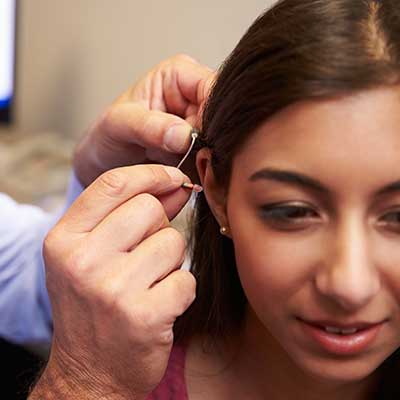Real-Ear Measurement
Real Ear measurement is a vital diagnostic tool used to precisely measure the sound output of a hearing aid. During a Real Ear test, a thin tube with a tiny microphone is gently inserted into your ear canal to measure sound levels directly inside your ear. Your hearing aid is then placed in position, and a series of sounds ranging from very quiet to very loud are played through it. The microphone captures these outputs, allowing us to adjust the hearing aid to ensure it delivers the correct volume and frequency for your specific hearing loss.
Modern hearing aids are highly customizable, and Real Ear measurement ensures each setting is optimized for the individual wearer’s experience. The results of a Real Ear test help tailor the device to your unique hearing loss and remove much of the guesswork from fitting a hearing aid, making it particularly beneficial for first-time hearing aid users.
Fine-Tuning Your Hearing Aid
Even when customizing the settings to your hearing profile there will be a period of adjustment with your new hearing aids. Your brain will need some time to relearn how to process sounds it hasn’t heard in a while. The worse the hearing loss, the longer this process typically takes.
The first few weeks you should practice using your hearing aids in different environments and by listening to audio recordings of books while you read the words. This will help your brain re-acquaint itself with processing sounds into words.
During this adjustment period also make note of any environments or circumstances where the hearing aid didn’t work as expected or was not comfortable. We’ll be able to help you tweak your hearing aids until they give you the sound quality and performance you’re expecting.

